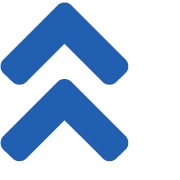- Home
- Council
- Major Projects
- Current Projects
- Porepunkah Transfer Station Landfill Rehabilitation Capping Project
Porepunkah Transfer Station Landfill Rehabilitation Capping Project
The Porepunkah Transfer Station Landfill Rehabilitation Capping Project works are now underway at the Porepunkah Transfer Station, running from December 2022 until March 2024, weather dependent.
These works include the replacement of the existing clay capping with a geosynthetic clay liner over old landfill waste to meet the Environmental Protection Authority's requirements of Best Practice Environmental Management guidelines.
Latest Update - 22 January 2024
The reopening of Porepunkah Transfer Station has been delayed until March 2024, weather dependent.
Unfortunately, there have been further delays to the landfill capping works due to ongoing, rigorous soil testing required by the EPA (Environmental Protection Authority).
At various stages of the works, soil testing is required to be completed, with results needing to be received prior to moving onto the next stage. In addition to inclement weather throughout 2023, there have been multiple delays in receiving soil results which has put the contractors behind schedule. In addition to these delays, capping layers cannot be constructed during rain events, and with the increased inclement weather experienced in 2023, there have been various compounding delays to the project timeline.
Capping works aim to prevent leachate (liquid waste) from the landfill entering natural water sources in the area, which why it’s incredibly important for these works to be completed successfully.
In addition to the normal Saturday and Sunday opening hours, Porepunkah Transfer Station will be open on the following days from 10am – 2pm:
- Wednesday, 24 January
- Wednesday, 31 January
Porepunkah Pit will remain open every Friday 12pm – 3pm for green waste disposal until Porepunkah Transfer Station reopens at its full capacity.
If you have further questions, please contact our team on 03 5755 0555.
To watch our Manager Engineering and Assets provide an update, head to
In addition to reaching compliance with the EPA requirements, this project will help reduce green house gas emissions from organic waste that was buried when the Porepunkah Transfer Station was once a landfill site.
To support these crucial construction works there are changed opening hours and accepted materials at the Porepunkah Transfer Station from Monday, 12 December 2022 to late Summer 2024.
Council will keep residents informed of any other changes during construction.
From Tuesday,13 December 2022, the following materials will not be accepted:
- Clean fill
- Green waste
- Drummuster containers
- Car bodies
From Tuesday, 10 January to completion of the project late Spring 2023, Porepunkah Transfer Station will be closed during weekdays.
Project information
The Porepunkah Transfer Station Landfill Rehabilitation Capping Project will see the construction of an earth cap comprising of a subgrade, geosynthetic clay liner, confined and topsoil layers.
Caps do not destroy or remove contaminants. Instead, they isolate them and keep them in place to avoid the spread of contamination.
Caps prevent people and wildlife from coming in contact with contaminants.
Currently the residual landfills across the Alpine Shire emit approximately 500 tonnes of greenhouse gas emissions. The capping works will also help to reduce these emissions, which is a key action for Council to reach net zero by 2023.
Green waste is currently one of the items that Council is unable to accept at the Porepunkah Transfer Station. This is because there is no other location within the footprint of the transfer station that would meet the Environment Protection Authority's required standards of green waste storage.
How Does It Work?
A cap isolates and prevents the spread of contamination in several ways. For example, it can:
- Stop rain from seeping through the material and carrying contaminants to the groundwater.
- Keep storm water runoff from carrying contaminated material offsite or into lakes and streams.
- Prevent wind from blowing contaminated material offsite.
- Control releases of gas from wastes containing or producing “volatile” chemicals (those that evaporate).
- Keep people and wildlife from coming into contact with the hazardous material and tracking contaminants offsite.
The subgrade is a 300mm layer and is required to provide a solid base over the waste to lay the geosynthetic clay liner (GCL).
The GCL is a woven fabric material sandwich with sodium bentonite clay in the middle which acts like a geomembrane, sealing the landfill and preventing water from entering the landfill.
The GCL consist of panels 45m long, 4.5m wide and 8mm thick. These panels are placed over the entire waste cell.
The confining layer is 300mm clay layer and acts as barrier to protect the GCL and prevent the seepage of water into the landfill.
These works aim to prevent leachate from the landfill entering natural water sources in the area.
The Environmental Protection Authority (EPA) provide strict guidelines on the construction of landfill caps.
Rate this page
Visit Us
2 Churchill Avenue, Bright VIC 3741
Mon to Fri - 9:00am to 5:00pm
Contact Us
PO Box 139, Bright VIC 3741
03 5755 0555
TTY users phone 133 677
then ask for 03 5755 0555
All contact details and opening hours
Feedback
We would love to hear what you think about the website. Tell us by submitting the feedback form.





